Here y=2x/(1x^2) Make sense So multiply both side by (1x^2) a quadritic equation will form in which cofficent of x^2 will be y and that of x will be 2 And constant will be 2 For x to be real D greater than or equal to zero So D=2^2–4y^2≥0 now Y^ 1 Alpha identifies it as Legendre's equation and gives the solution y(x) = c1x c2( − x(log(1 − x) / 2 − log(x 1)) − 1) It offers step by step if you have the right account Share answered Jul 19 ' at 1348 Ross Millikan2xy=1 Geometric figure Straight Line Slope = 2 xintercept = 1/2 = yintercept = 1/1 = Rearrange Rearrange the equation by subtracting what is to the right of the
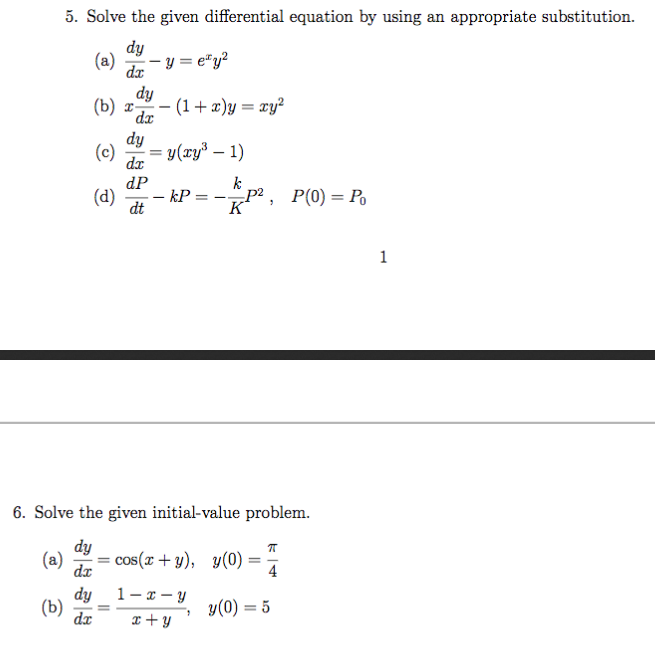
Solve The Given Differential Equation By Using An Chegg Com
Y=e^x y=x^2-1 x=-1 x=1
Y=e^x y=x^2-1 x=-1 x=1-Equations Tiger Algebra gives you not only the answers, but also the complete step by step method for solving your equations 1/x/1/y so that you understand better As you have x2 then 1 x2 will always be positive So y is always positive As x becomes smaller and smaller then 1 1 x2 → 1 1 = 1 So lim x→0 1 1 x2 = 1 As x becomes bigger and bigger then 1 x2 becomes bigger so 1 1 x2 becomes smaller lim x→±∞ 1 1 x2 = 0 build a table of value for different values of x and calculate the




How Accurately Can You 1 Predict Y From
Where a fraction equals zero, its numerator, the part which is above the fraction line, must equal zero Now,to get rid of the denominator, Tiger multiplys both sides of the equation by the denominator Here's how x• (y1)• (y1) —————————————— • xy = 0 • xy xy Now, on the left hand side, the xy cancelsVariation of Parameters Consider the linear differential equation {eq}y''b(x)y'c(x)y=f(x) {/eq} with general solution to the homogeneous equation of {eq}y_c=C_1y_1(x)C_2y_2(x) The answer is =(xe^x)/(1x)^2 We need the differentiation of a quotient (u/v)'=(u'vuv')/v^2 Here, u=e^x, =>, u'=e^x v=1x, =>, v'=1 Therefore, dy/dx=(e^x(x1)e^x
This problem has been solved!Y= (x1) (x1) (x3) Simple and best practice solution for y= (x1) (x1) (x3) equation Check how easy it is, and learn it for the future Our solution is simple, and easy to understand, so don`t hesitate to use it as a solution of your homework If it's not what You are looking for type in the equation solver your own equation and let us If x^2 xy y^3 = 1, find the value of y" at the point where x = 1 Boost your resume with certification as an expert in up to 15 unique STEM subjects this summer
Steps for Solving Linear Equation y=2x1 y = 2 x − 1 Swap sides so that all variable terms are on the left hand side Swap sides so that all variable terms are on the left hand side 2x1=y 2 x − 1 = y Add 1 to both sides Add 1 to both sidesAxis of Symmetry x = −1 2 x = 1 2 Directrix y = −5 2 y = 5 2 Select a few x x values, and plug them into the equation to find the corresponding y y values The x x values should be selected around the vertex Tap for more steps Replace the variable x x with − 1 1 in the expression If xy = ex y, then prove that dy/dx = (log x)/(1 log x)2 Welcome to Sarthaks eConnect A unique platform where students can interact with teachers/experts/students to get solutions to their queries



Www Stat Auckland Ac Nz Fewster 325 Notes Ch3annotated Pdf




If X Y E X Y What Is Dy Dx Quora
33 Rewrite the two fractions into equivalent fractions Two fractions are called equivalent if they have the same numeric value For example 1/2 and 2/4 are equivalent, y/ (y1)2 and (y2y)/ (y1)3 are equivalent as well To calculate equivalent fraction , multiply the Numerator of each fraction, by its respective MultiplierSimple and best practice solution for 1/x1/y equation Check how easy it is, and learn it for the future Our solution is simple, and easy to understand, so don`t# log a^n = nlog a# #ln x= y1# #ln x 1 = y# Step 3 Change #y# to #f^(1)(x) # #f^(1




The Solution Of The Differential Equation Dy Dx X Y 2 Whe
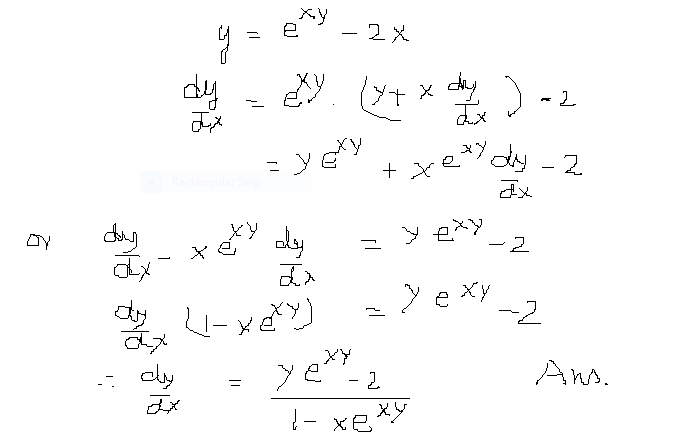



How Do You Differentiate Y E Xy 2x Socratic
Free derivative applications calculator find derivative application solutions stepbystepClick here👆to get an answer to your question ️ If e^y (x 1) = 1 , then show that d^2ydx^2 = (dydx)^2 Given #y= e^(x1)# (this is a onetoone function) Step 1 Switch #x# for #y# and #y# for #x# like this #color(red) x= e^(color(blue)(y)1)# Step 2 Begin to solve for #y# Take #ln# of both side #ln(x) = lne^(y1)# Use the properties of log #ln e= 1#;




Find All The Second Order Partial Derivatives Of The Chegg Com




Engineering Mathematics Notes
See the answer Show transcribed image text Expert AnswerLearn with Tiger how to do x^1y^1/(xy)1 fractions in a clear and easy way Equivalent Fractions,Least Common Denominator, Reducing (Simplifying) Fractions Tiger Algebra Solver 1 Answer Start by finding the intersection point of the two functions We also know through end behaviour of the function that y = ex will be above y = e−x So, we determine the area of y = ex in the interval 0 ≤ x ≤ 1 and then subtract the area of y = e−x in the interval 0 ≤ x ≤ 1 This can be approximated to 1086 u2



What Is The Derivative Of Y E X 1 E X 1 Quora




Xy 1 X Y E X Sin 2x 1st Order Linear Nonhomogeneous Youtube
Use the distributive property to multiply y by x 2 1 Add x to both sides Add x to both sides All equations of the form ax^ {2}bxc=0 can be solved using the quadratic formula \frac {b±\sqrt {b^ {2}4ac}} {2a} The quadratic formula gives two solutions, one when ± is addition and oneCompute answers using Wolfram's breakthrough technology & knowledgebase, relied on by millions of students & professionals For math, science, nutrition, historyAs you probably know, if the solution y(x) of that ODE has a maximum point at x=t, then y'(t)=0 Hence, the ODE tells us that in such a case we must have y(t)exp(t)=1 ===> y(t)=1/exp(t)=exp(t) Therefore, from the explicit solution y(x)=(x2)/(1



If X Y E X Y Show That Dy Dx Logx Log Xe 2 Sarthaks Econnect Largest Online Education Community




Which Equation Is Represented By The Graph Below Y E X Y E X 1 Y In X Y In X 1 Brainly Com
Explanation Characteristic equation of differential equation is r3 −3r2 2r = 0 or r ⋅ (r −1) ⋅ (r −2) = 0 Its roots are r1 = 0, r2 = 1 and r3 = 2 Consequently homogeneous solution of it, yh = c1 c2 ⋅ ex c3 ⋅ e2x I use variation of parameters for particular solution of it,Get stepbystep solutions from expert tutors as fast as 1530 minutes Your first 5 questions are on us!Use the method of cylindrical shells to find the volume generated by rotating the region bounded by the given curves about the axis Sketch the region and a




Double Integrals Volume And Average Value
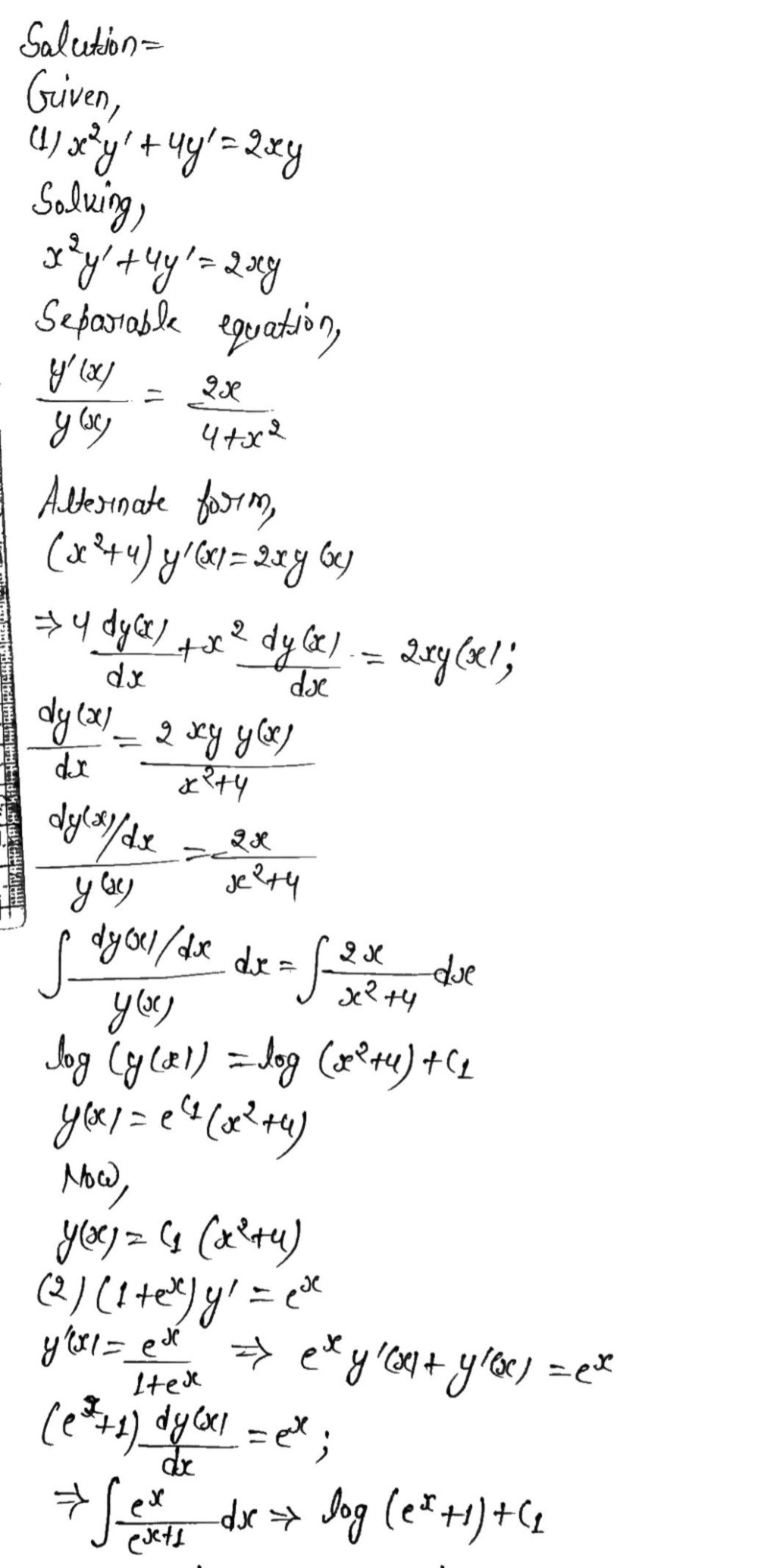



Evaluate The Following Differential Equations To G Gauthmath
Select a few x x values, and plug them into the equation to find the corresponding y y values The x x values should be selected around the vertex Tap for more steps Substitute the x x value − 1 1 into f ( x) = √ − x 1 f ( x) = x 1 In this case, the point is ( − 1, ) ( 1, )Get stepbystep solutions from expert tutors as fast as 1530 minutes Your first 5 questions are on us!33 Rewrite the two fractions into equivalent fractions Two fractions are called equivalent if they have the same numeric value For example 1/2 and 2/4 are equivalent, y/ (y1)2 and (y2y)/ (y1)3 are equivalent as well To calculate equivalent fraction , multiply the Numerator of each fraction, by its respective Multiplier




Calculus 2 Integration Finding The Area Between Curves 1 Of 22 Ex 1 Y E X Y X 2 X 0 X 2 Youtube




Working With Exponentials And Logarithms
Divide 1, the coefficient of the x term, by 2 to get \frac{1}{2} Then add the square of \frac{1}{2} to both sides of the equation This step makes the left hand side of the equation a perfect squareY = x^2, x = y ^2;Normal of y=x^2x1, (2, 1) \square!



What Is The Solution Of The Differential Equation Dy Dx 1 E X Y Quora




Find The Volume Of The Solid Obtained By Rotating The Chegg Com
Compute answers using Wolfram's breakthrough technology & knowledgebase, relied on by millions of students & professionals For math, science, nutrition, historySuppose that mathx2y2=2/math is the equation mathx^2y^2=2\text{}/math Let mathx=\dfrac{1}{2}k\space\textAlgebra Graph y= (1/2)^x y = ( 1 2)x y = ( 1 2) x Exponential functions have a horizontal asymptote The equation of the horizontal asymptote is y = 0 y = 0 Horizontal Asymptote y = 0 y = 0




1 2e X Y Dx 2e X Y 1 X Y Dy 0 Novocom Top
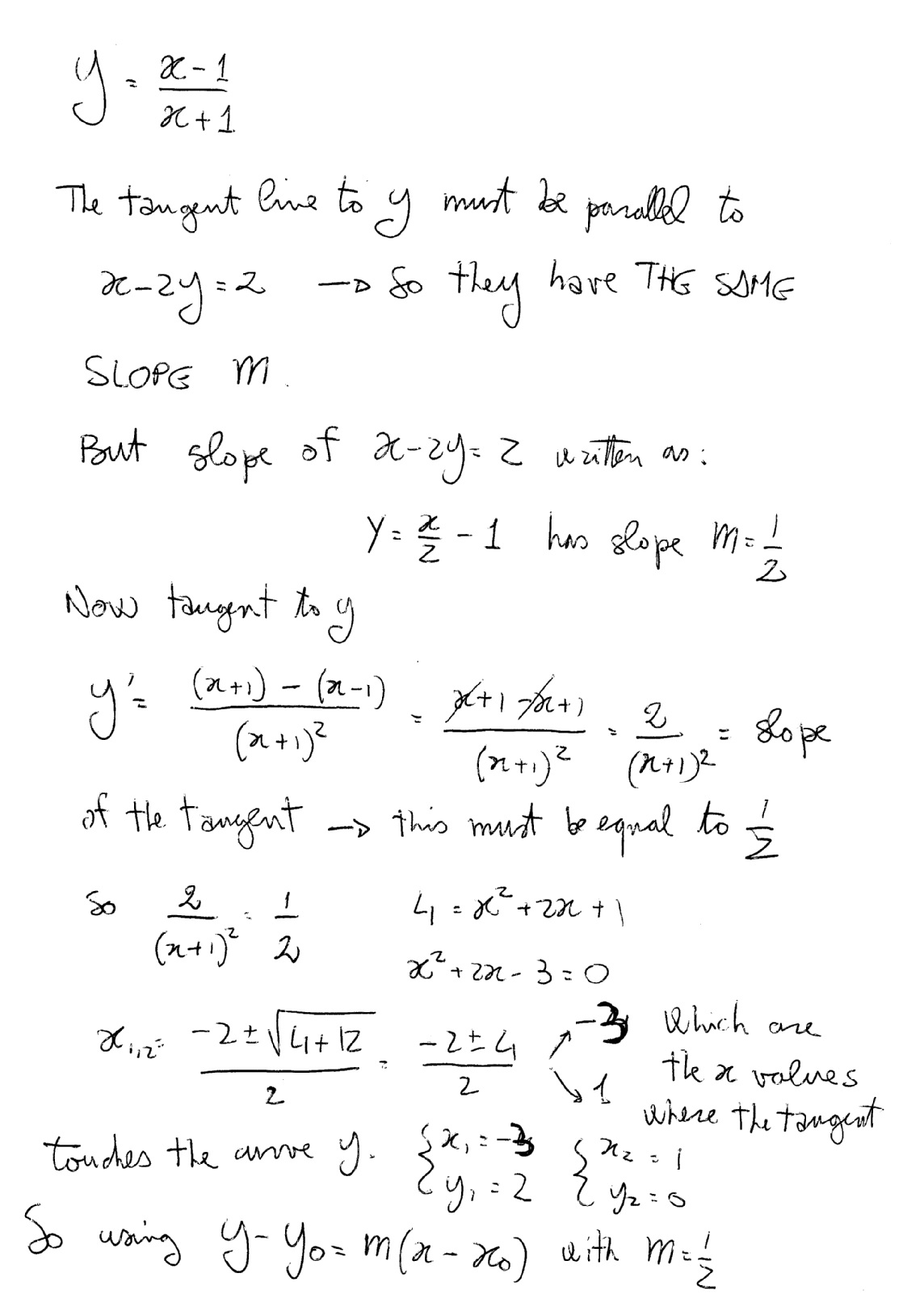



How Do You Find The Equations Of The Tangent Lines To The Curve Y X 1 X 1 That Are Parallel To The Line X 2y 2 Socratic
Y=x/ (x1/2) Simple and best practice solution for Y=x/ (x1/2) equation Check how easy it is, and learn it for the future Our solution is simple, and easy to understand, so don`t hesitate to use it as a solution of your homework If it's not what You are looking for type in the equation solver your own equation and let us solve itQuestion Y = E^x, Y = X^2 1, X = 1, X = 1 Find The Area Of The Region This problem has been solved!Raise x − 1 x 1 to the power of 1 1 Use the power rule a m a n = a m n a m a n = a m n to combine exponents Add 2 2 and 1 1 Take the cube root of each side of the equation to set up the solution for x x Remove the perfect root factor x−1 x 1 under the radical to solve for x x
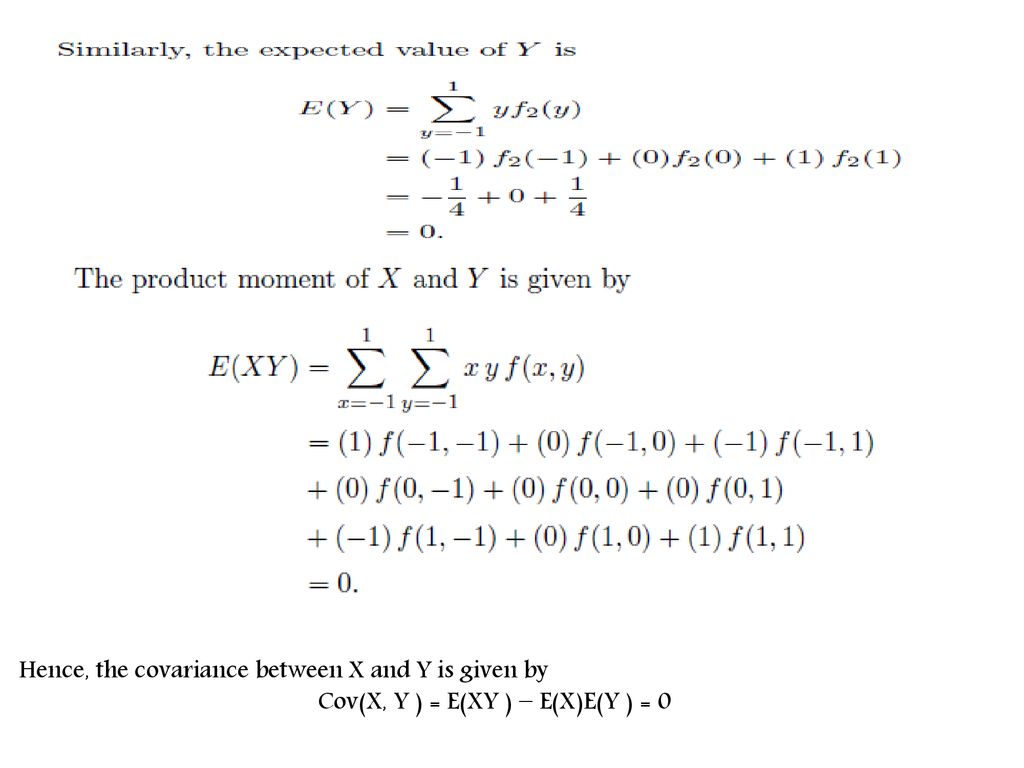



Product Moments Of Bivariate Random Variables Ppt Download




Implicit And Logarithmic Differentiation
See the answer Sketch the region enclosed by the given curves y = e^x, y = x^21, x = 1, x = 1 Find the area of the region Show transcribed image textAnswer to Find the area of the region formed by the curves y = e^x, y = x^2 1, x = 1, and x = 1 By signing up, you'll get thousands of Stack Exchange network consists of 177 Q&A communities including Stack Overflow, the largest, most trusted online community for developers to learn, share their knowledge, and build their careers Visit Stack Exchange




Variation Of Parameters Y 2y Y E X 1 X 2 Youtube




The Solution Of The Differential Equation Dy Dx E X Y X 2e Y Is Youtube
To write 1 x 1 x as a fraction with a common denominator, multiply by y y y y To write 1 y 1 y as a fraction with a common denominator, multiply by x x x x Write each expression with a common denominator of xy x y, by multiplying each by an appropriate factor of 1 1 Tap for more steps Multiply 1 x 1 x and y y y yFree Circle calculator Calculate circle area, center, radius and circumference stepbystepCompute answers using Wolfram's breakthrough technology & knowledgebase, relied on by millions of students & professionals For math, science, nutrition, history




Implicit And Logarithmic Differentiation
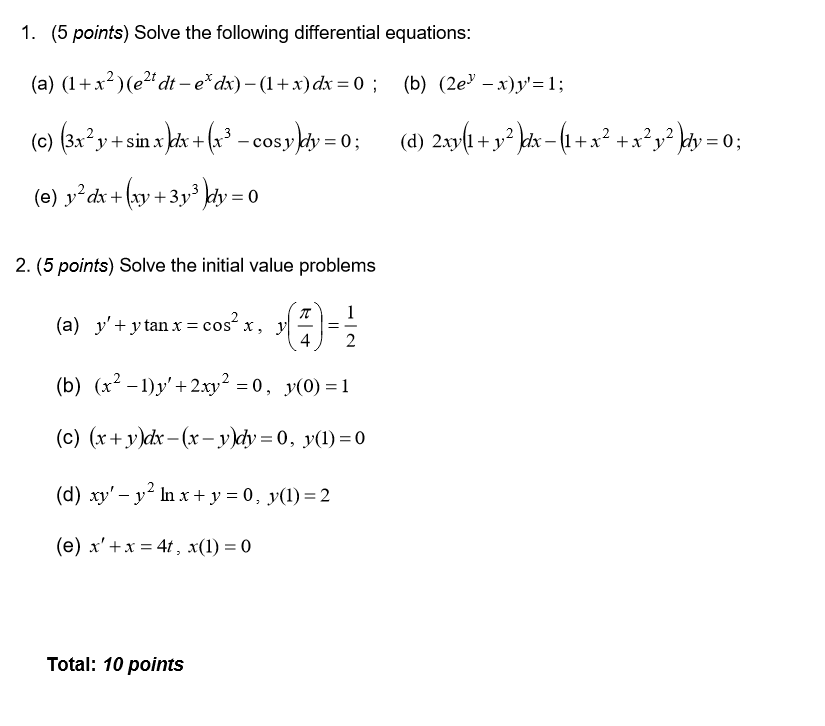



Solve The Following Differential Equations 1 Chegg Com
Combine like terms in xxy Multiply \frac {x} {y} times \frac {y} {xy} by multiplying numerator times numerator and denominator times denominator Cancel out y in both numerator and denominator To add or subtract expressions, expand them to make their denominators the same Multiply 1 times \frac {xy} {xy} Ex 95, 10 In each of the Exercise 1 to 10 , show that the given differential equation is homogeneous and solve each of them (1𝑒^(𝑥/𝑦) )𝑑𝑥𝑒^(𝑥/𝑦) (1−𝑥/𝑦)𝑑𝑦=0 Since the equation is in the form 𝑥/𝑦 , we will take 𝑑𝑥/𝑑𝑦 Instead of 𝑑𝑦/𝑑𝑥 Step 1 Find 𝑑𝑥/𝑑𝑦 (1𝑒^(𝑥/𝑦) )𝑑𝑥𝑒^(𝑥/𝑦) (1−𝑥/𝑦If xy=1 and x2y2=2, what is the value of x?
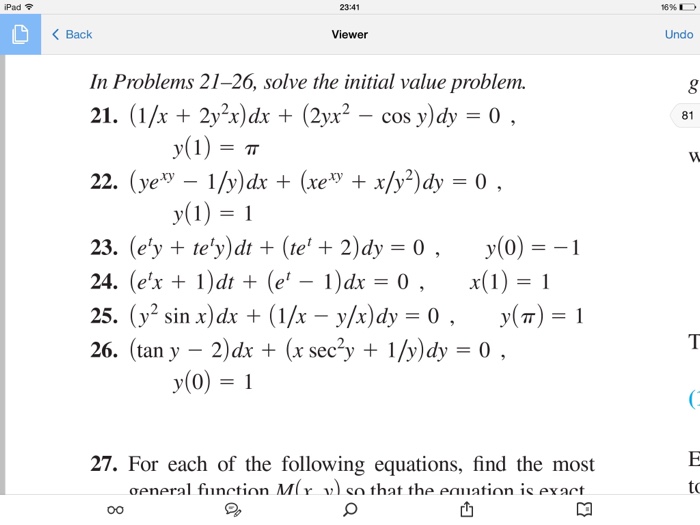



In Problems 21 26 Solve The Initial Value Problem Chegg Com
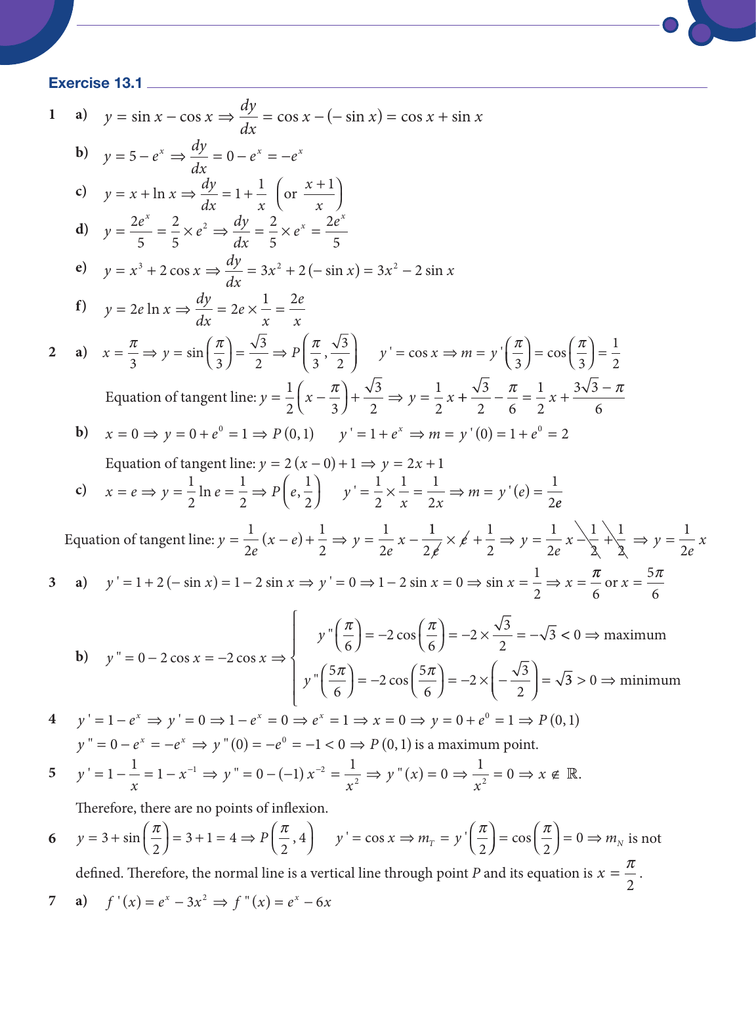



X X Dy Dx X X X X Sin Cos Cos Sin Cos Sin
About x = 1Find the volume of the solid obtained by rotating theregion bounded by the given curves about the specified line Sketchthe reVariation of Parameters y'' 2y' y = e^(x)/(1x^2)Become a patreon https//wwwpatreoncom/umair_calculus
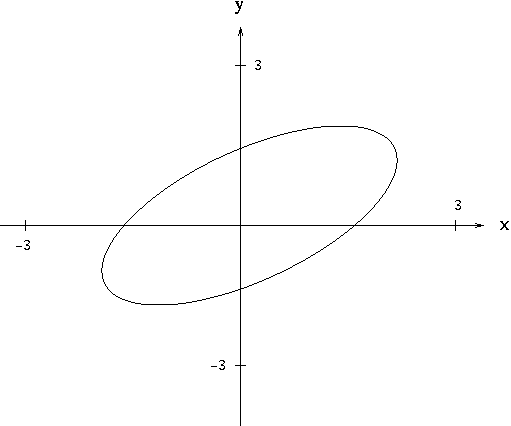



Implicit Differentiation




How Accurately Can You 1 Predict Y From X And 2 Predict X From Y Ppt Download
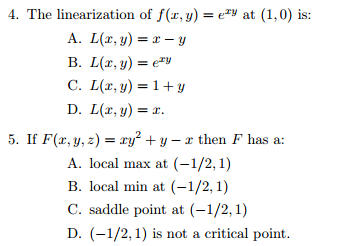



The Linearization Of F X Y E Xy At 1 0 Is A Chegg Com



E X1 1 V Ar X1 2 1 E X2 2 V Ar X2 2 2 Cov X1 X2 12 Now Generate Two New Variables Y X1 3x2 And Z X1 X2 And Derive Course Hero



Solved Find The Directions In Which F X Y Ye Xy Has Directional Derivative At The Point 0 2 Is Equal To 1 Course Hero



Http Math Wustl Edu Beheshti 14 4 Sol Pdf



If Yx Ey X Prove That Dy Dx 1 Log Y 2 Log Y Studyrankersonline




Dy Dx 2xy F X Y 0 2 Novocom Top




How Accurately Can You 1 Predict Y From



Www Utdallas Edu Efrom Solhw Pdf



If X Y E X Y What Is Dy Dx Quora
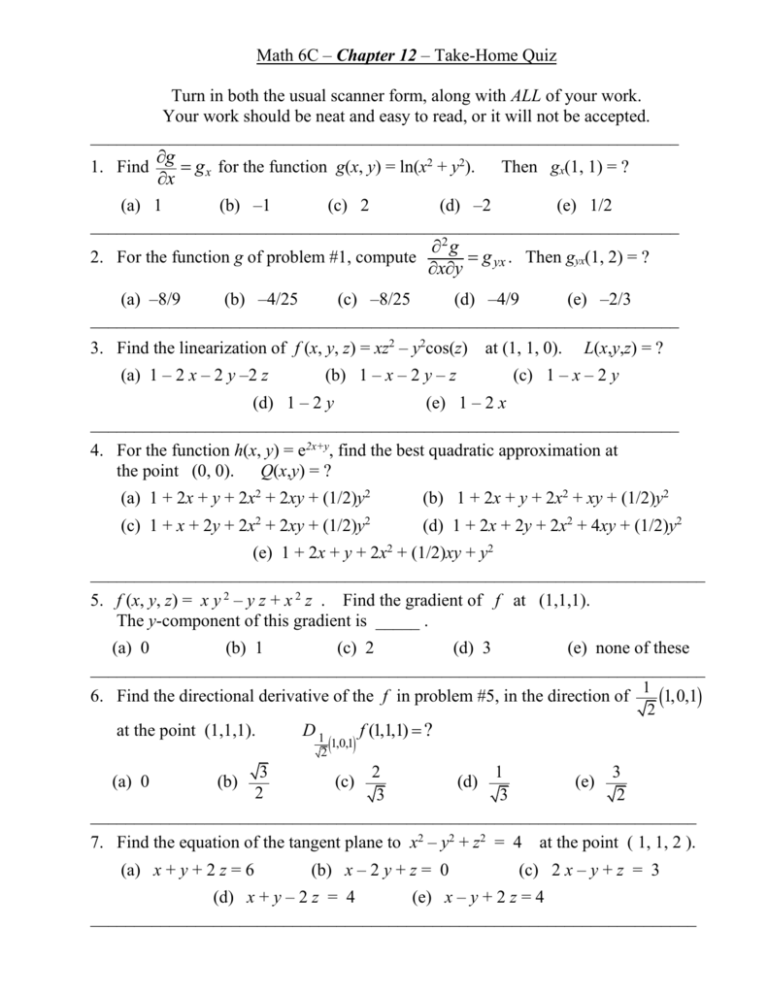



Math 6c Chapter 12 Quiz
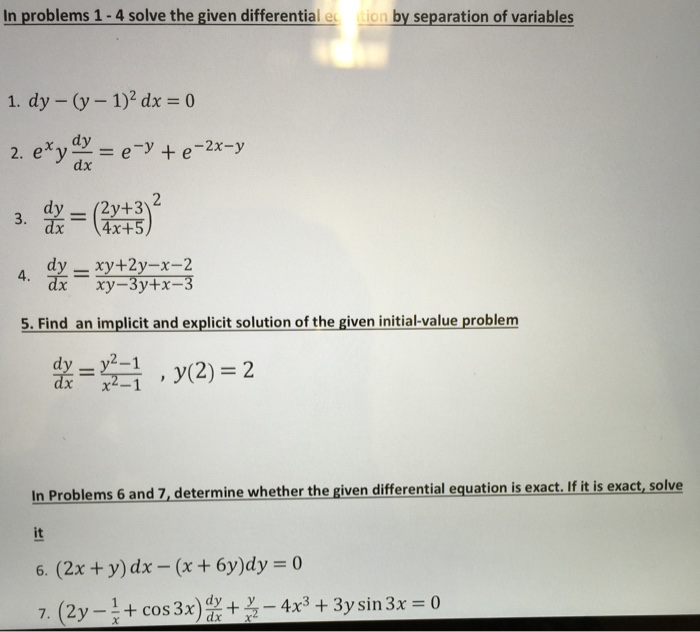



Solve The Given Differentia By Separation Of Chegg Com




Pdf Probability And Statistics Hints Solutions To Test Set 6 Narender Palugula Academia Edu




Find The General Solution 1 Y 1 X Y 7 X 2 3 Chegg Com




X Dy Dx Y E X X 0 E Xdy Dx 2e Xy 1 Xy Chegg Com



1
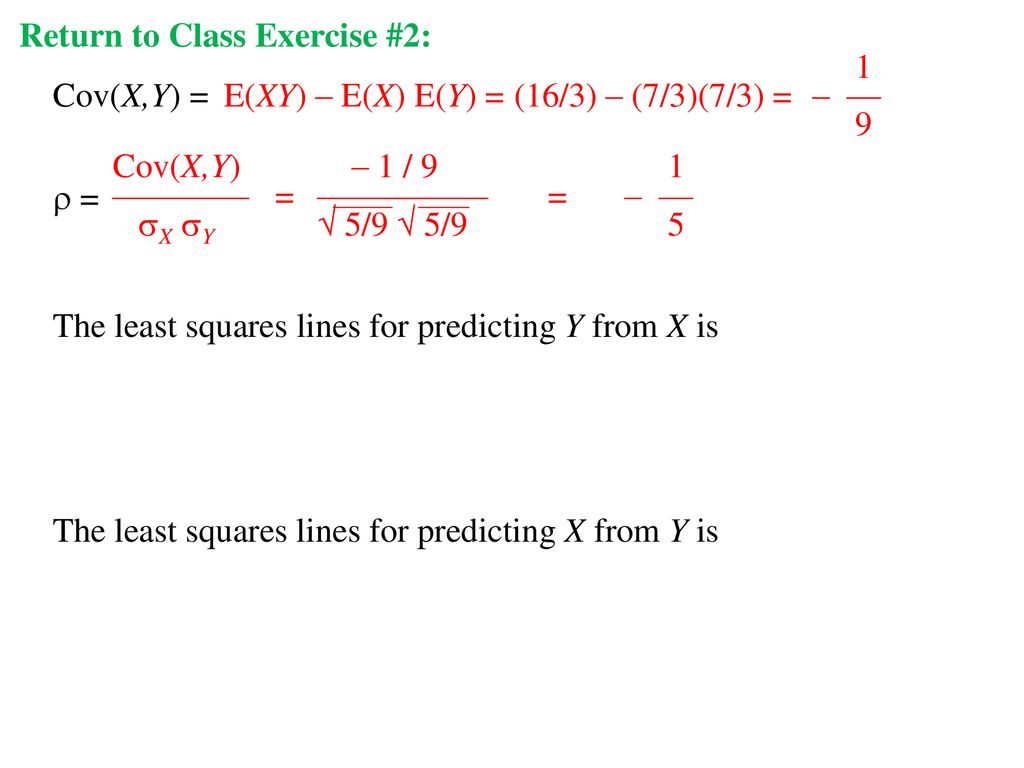



How Accurately Can You 1 Predict Y From X And 2 Predict X From Y Ppt Download



Www Usna Edu Users Math Hottovy Files Documents Sm316 431 Hw9s Pdf




Misc 14 Find Particular Solution X 1 Dy Dx 2e Y 1



Academic Uprm Edu Wrolke Esma5015 Probability4 Html
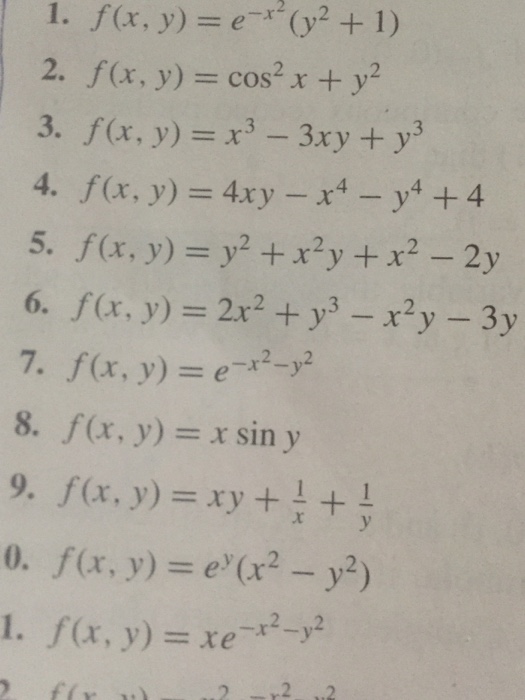



F X Y E X 2 Y 2 1 F X Y Cos 2 X Y 2 Chegg Com
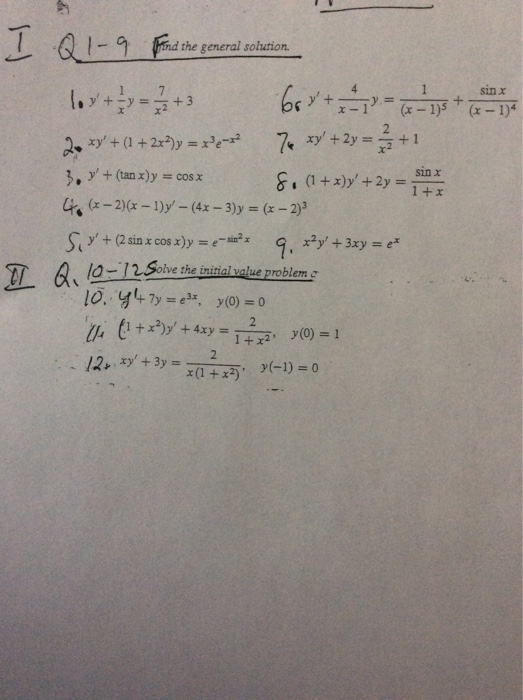



Find The General Solution Y 1 X Y 7 X 2 3 Chegg Com



Www Math Colostate Edu Clayton Teaching M113f10 Homework Hw7solutions Pdf



If X Y E X Y What Is Dy Dx Quora




How Accurately Can You 1 Predict Y From X And 2 Predict X From Y 6 4 9 2 9 5 1 9 4 Y 1 9 3 1 9 2 1 1 2 3 4 X 5 6 Slideshow And Powerpoint Viewer How Accurately Can You 1 Predict




How Accurately Can You 1 Predict Y From



1




Tangent Plane To X 2 Xy Y 2 Z 0 Youtube



If Xy E X Y Then Prove That Dy Dx Log X 1 Log X 2 Sarthaks Econnect Largest Online Education Community




Solve The Given Differential Equation By Using An Chegg Com
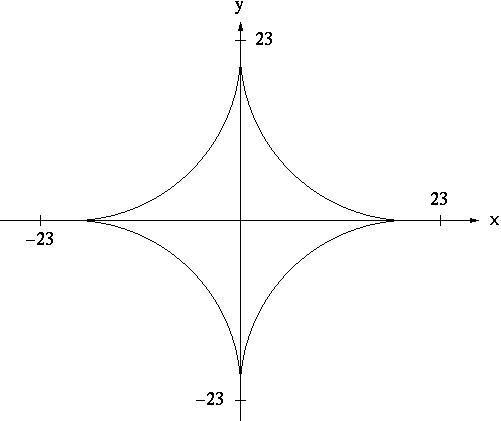



Implicit Differentiation




Ex 9 5 10 Show Homogeneous 1 Ex Y Dx E X Y 1 X Y




How Do You Differentiate E Xy Use Implicit Differentiation Youtube




Verify Jj 1 Given X E U Cos V Y E U Sin V Mathematics Stack Exchange



1



Http Www2 Johnabbott Qc Ca Math Gr Cal C1ns C1 Impdf Pdf




Worked Example Implicit Differentiation Video Khan Academy




Solved Sketch The Region Enclosed By The Given Curves De Chegg Com



1
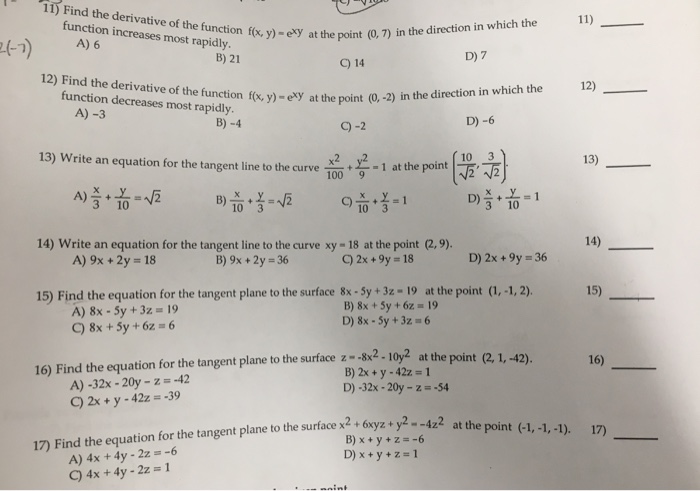



Find The Derivative Of The Function F X Y E Xy At Chegg Com




How Accurately Can You 1 Predict Y From



Volume Of A Solid Of Revolution Cylindrical Shells




If X Y E X Y Then Dy Dx Is A 1 X 1 Logx B 1




Find The Differential Equation I E X C E Y 1 Ii Y 2




Solve D 2 3d 2 Y E E X Using Method Of Variation Of Parameters Mathematics Stack Exchange
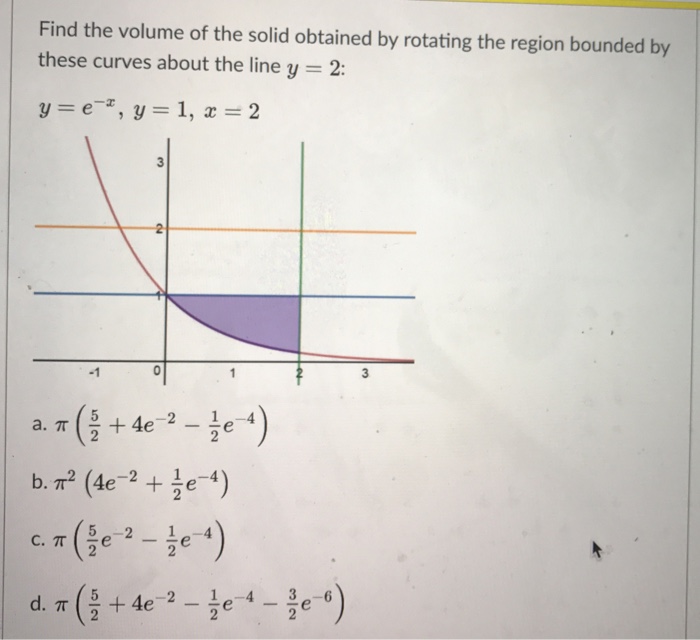



Find The Volume Of The Solid Obtained By Rotating The Chegg Com
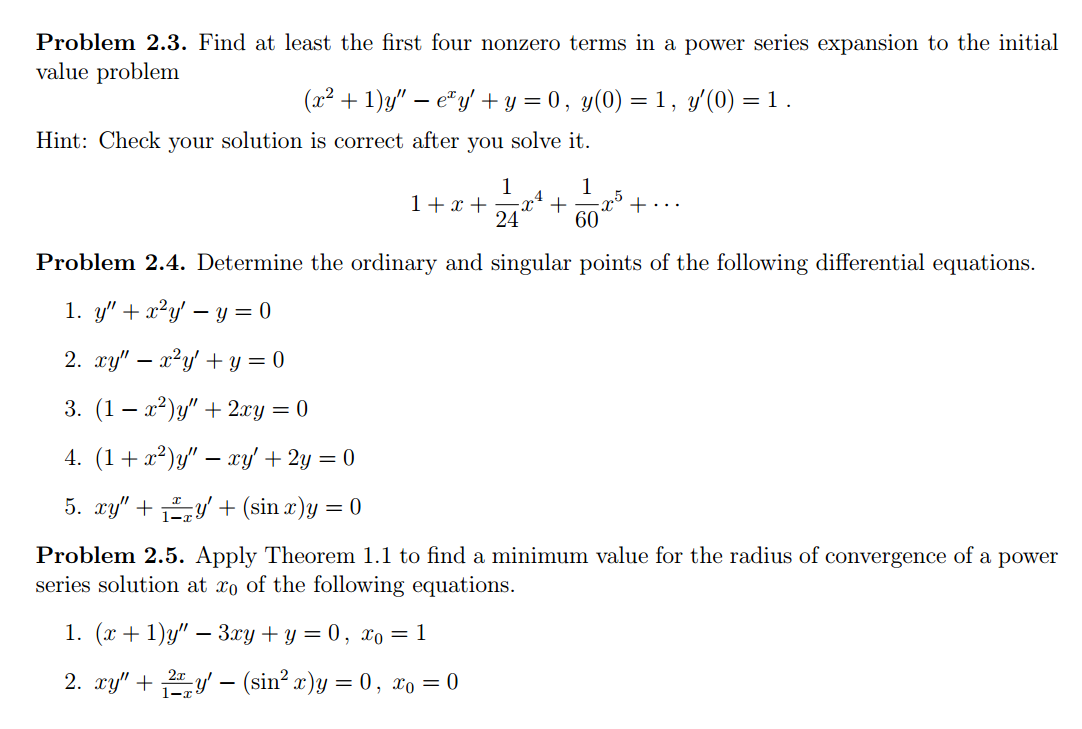



Find At Least The First Four Nonzero Terms In A Power Chegg Com




How To Solve A Differential Equation With Series X 1 Y Xy Y 0 With Y 0 2 Y 0 6 Youtube




How To Find Dy Dx Of E Xy X 2 Y 2 1 Youtube




Solve D 2 3d 2 Y E E X Using Method Of Variation Of Parameters Mathematics Stack Exchange
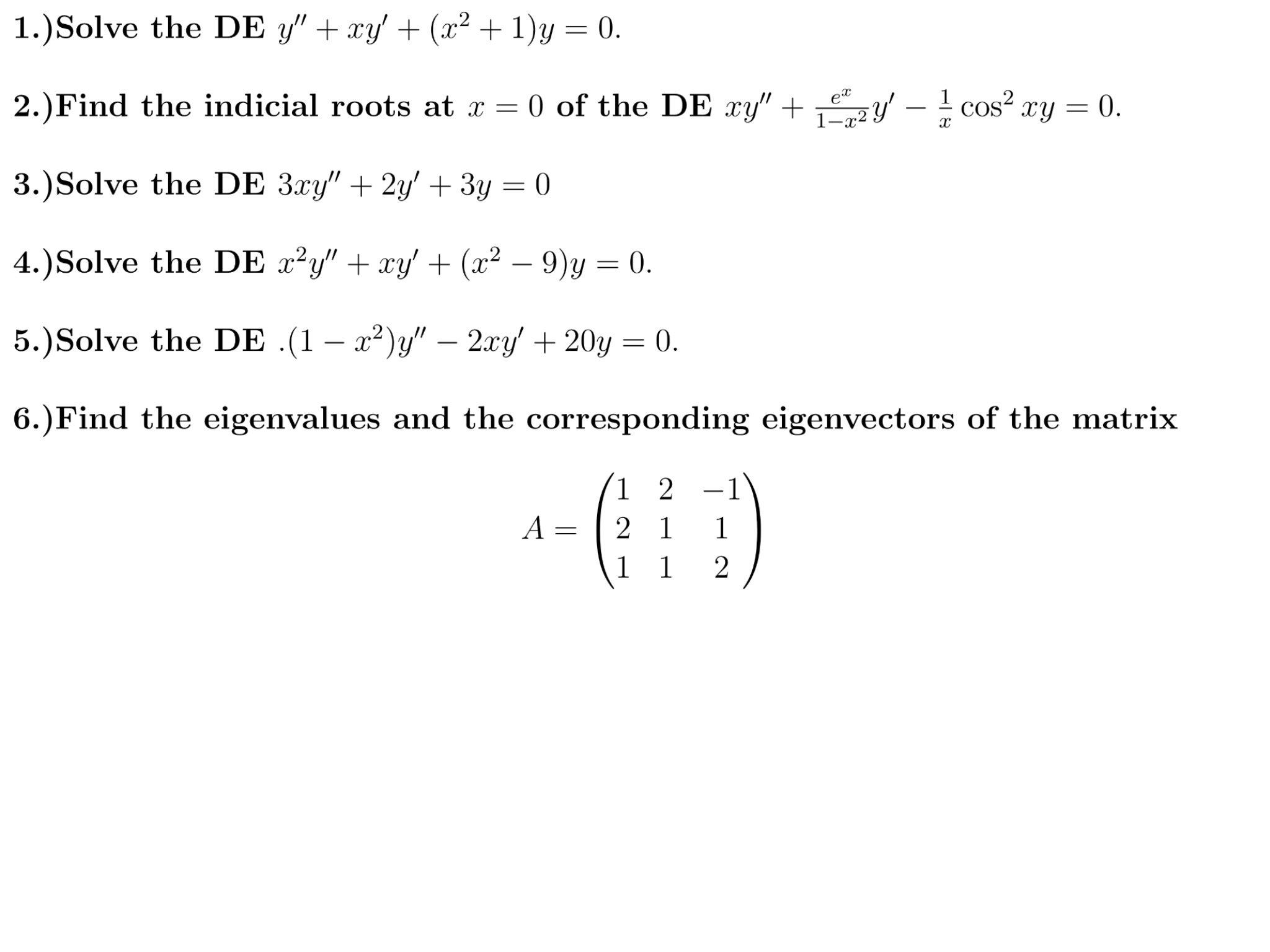



Solved Solve The De Y Xy X 2 1 Y 0 Find The Chegg Com



What Is The Solution Of This Equation D 2 4d 3 Y E E X Quora




Xe 1 0 X Y O 1 1y 2 1 Let X Y Be Jointly Continuous With Homeworklib




Worked Example Implicit Differentiation Video Khan Academy
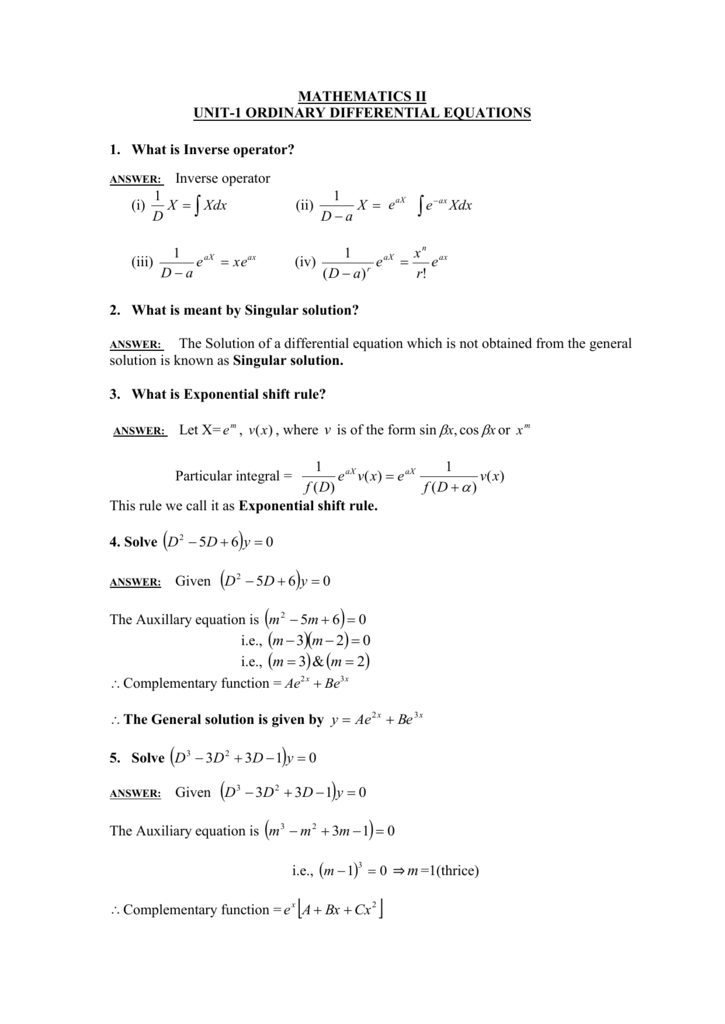



Mathematics Ii Tranquileducation
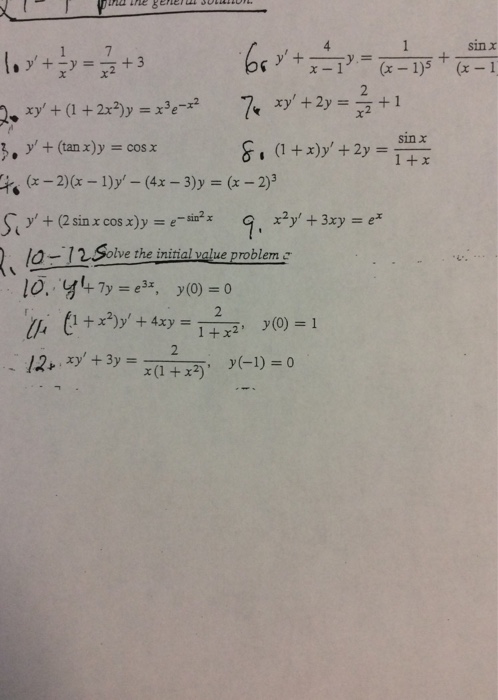



Y 1 X Y 7 X 2 3 Xy 1 2x 2 Y X 3 Chegg Com
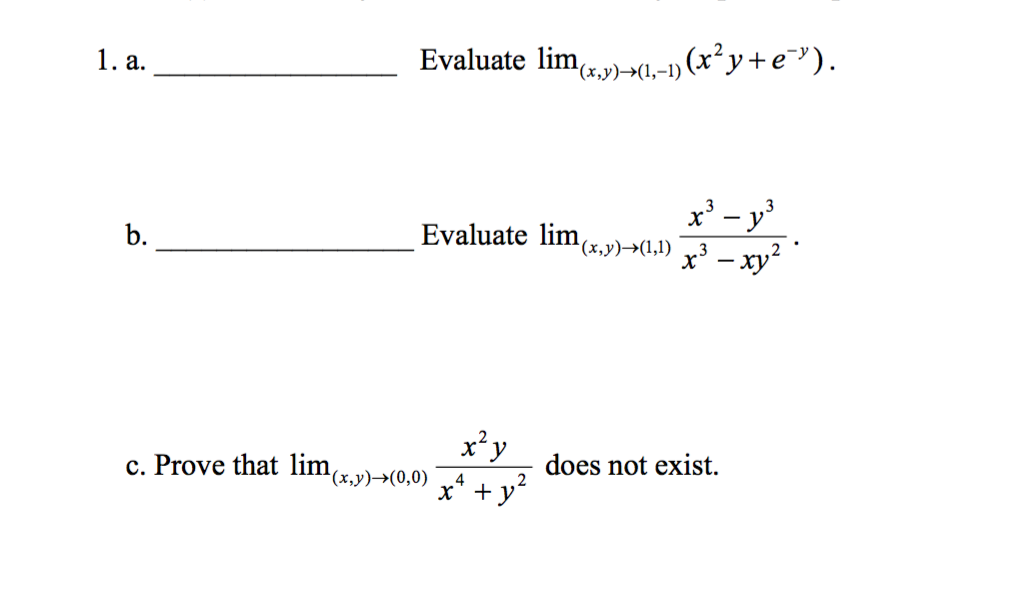



A Evaluate Lim X Y 1 1 X 2y E Y Chegg Com




Solution Of The Differential Equation 1 E X Y Dx E X Y 1 X




How To Solve A Differential Equation With Series X 1 Y Xy Y 0 With Y 0 2 Y 0 6 Youtube




Ex 9 4 23 General Solution Of Dy Dx E X Y Is A E X E Y C




15 6 Calculating Centers Of Mass And Moments Of Inertia Mathematics Libretexts



Http Www Math Sci Hokudai Ac Jp S Settepanella Teachingfile Calculus Calculus2 Pagine Lineintex Pdf
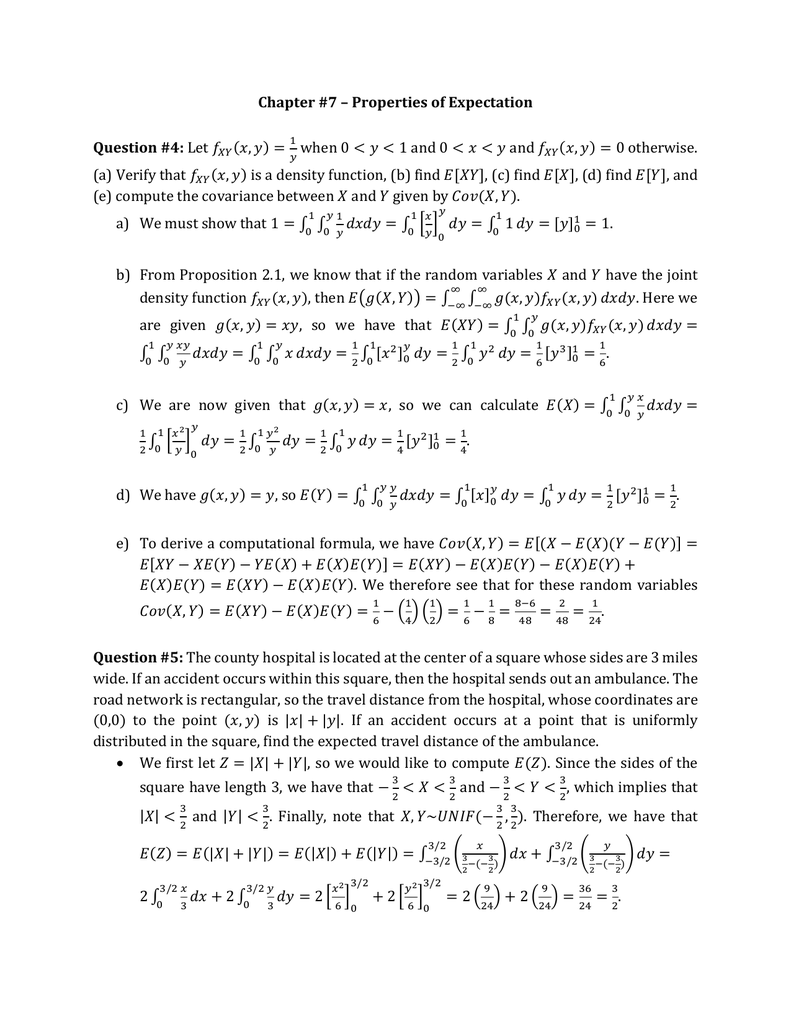



Chapter 7 Properties Of Expectation Question 4



Www Stat Auckland Ac Nz Fewster 325 Notes Ch3annotated Pdf




Working With Exponentials And Logarithms
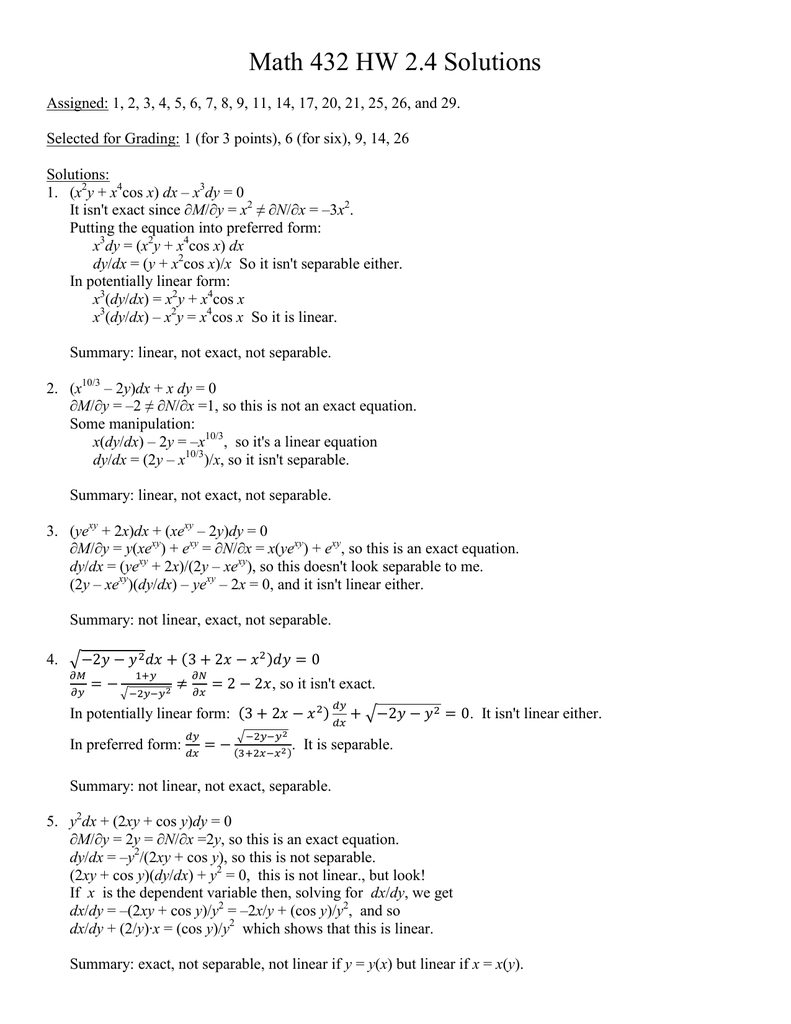



Math 432 Hw 2 4 Solutions




Let S Verify That Var X Y Var X Var Y Two Independent Random Variables By Wallace Liu Medium
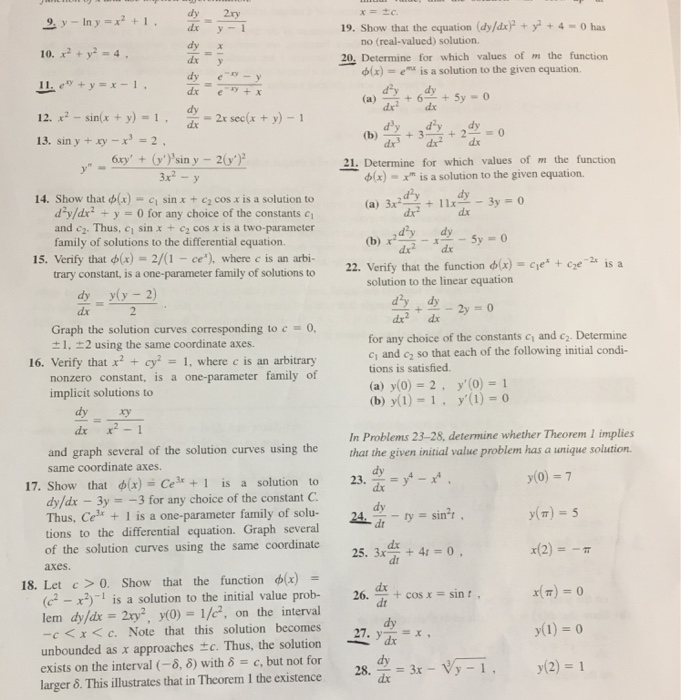



Y Ln Y X 2 1 Dy Dx 2xy Y 1 X 2 Y 2 4 Chegg Com




1 Suppose X And Y Are Continuous Random Variables With Joint Pdf F X Y 4 Z Xy If Homeworklib



What Is The Solution Of The Differential Equation Dy Dx 1 E X Y Quora




1 2e X Y Dx 2e X Y 1 X Y Dy 0 Youtube




Log Xy X 2 Y 2 Prove That Dy Dx Y 2x 2 1 X 1 2y 2 Brainly In
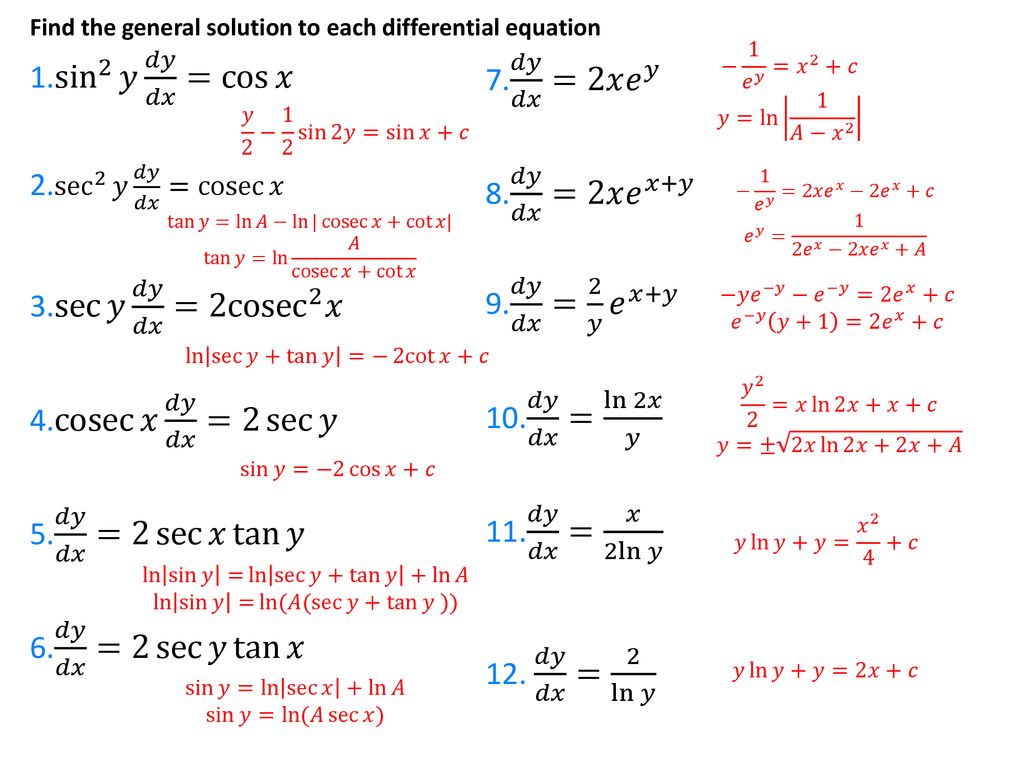



Differential Equations Separation Of Variables Ppt Download



What Is The Solution Of The Differential Equation Dy Dx 1 E X Y Quora




Differential Equations Solved Examples Reduction Of Order Formula Second Solution 1 2x X 2 Y 2 1 X Y 2y 0 Y1 X X 1




Ex 9 5 10 Show Homogeneous 1 Ex Y Dx E X Y 1 X Y
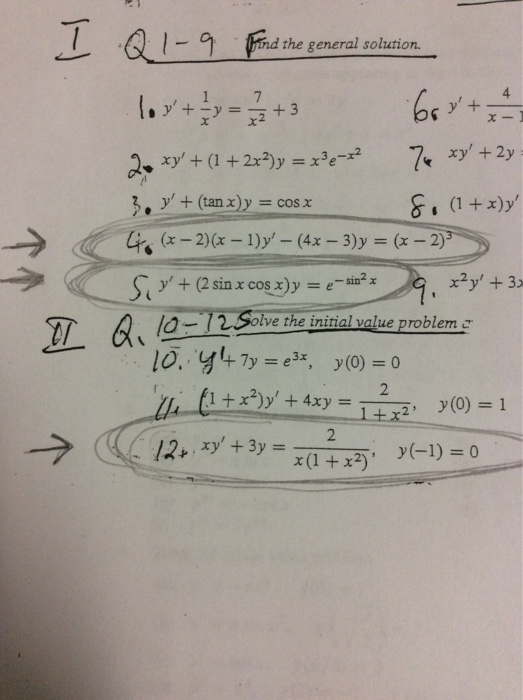



Find The General Solution Y 1 Xy 7 X 2 3 Chegg Com



0 件のコメント:
コメントを投稿